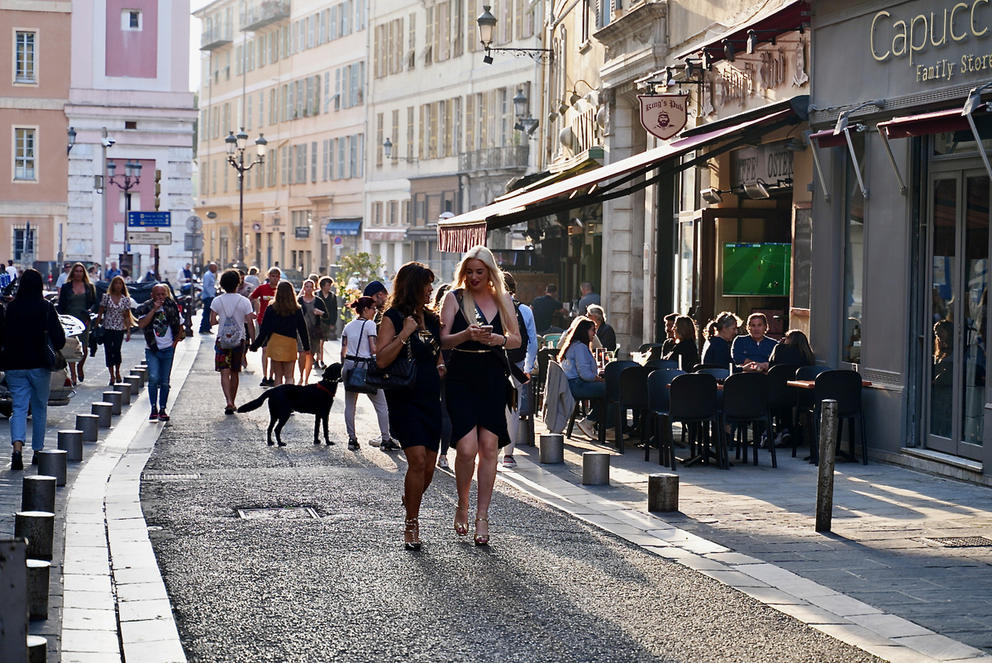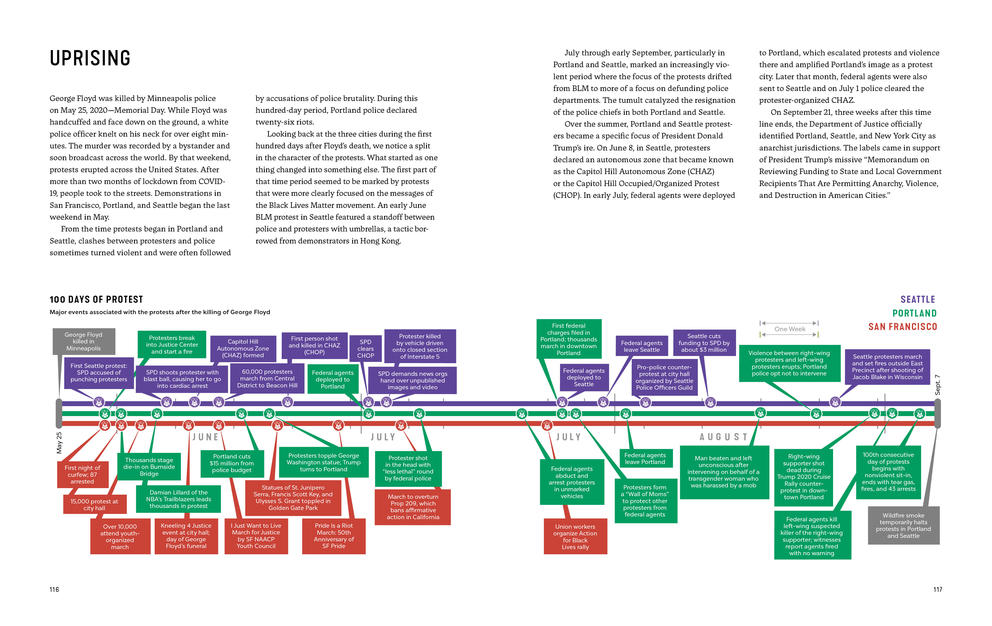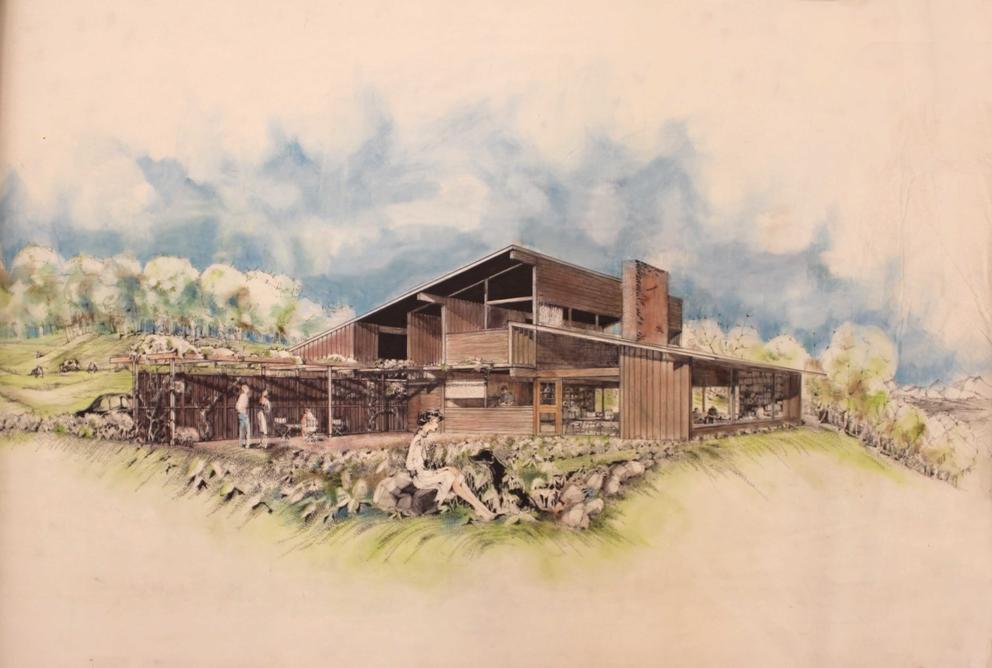Exploration of urban character is front and center in a new book called Sustaining A City’s Culture and Character: Principles and Best Practices, by former Seattle environmental and land use attorney Charles Wolfe and his associate Tigran Haas, director of the Centre for the Future of Places in Stockholm. Academic but accessible, the book posits an interesting set of questions: change, growth and development will happen, but how can these transformations occur while nurturing daily life and community culture? How do we define cities and understand urban context?
Wolfe faced these issues in his legal work in Seattle, and a few years ago in his book, Seeing the Better City, he wrote about the importance of learning to observe cities more thoughtfully. Big data and digital mapping — modern-day tools in the planner's tool belt — are necessary, but so too are one's own eyes. In his latest, building on ideas familiarly cited by the likes of theorist and urbanist Jane Jacobs and others, Wolfe argues that on-the-ground life of cities is crucial to understanding before embarking on big projects. In a globalizing world, local still matters.
“Somewhere between the hubbub of organic urban character, nostalgia and commercially driven caricature," Wolfe writes, "exists an ideal place in search of documentation, one that sustainably blends and balances global and local, old and new.” Planners, in other words, need to understand the history and context of a place before they plan. Wolfe suggests a specific technique for the job, urging planners to keep an “urban diary” to record life on the ground with the goal of systematically understanding a place’s history, ethnography, cultural assets and traditions. He writes, “I suggest that these approaches should incorporate a holistic understanding of social, cultural and otherwise amorphous or intangible environments and attributes.” What we call “livability” is made of such things that are only intangible if we’re not paying attention.
Wolfe is based in London now but has traveled widely to study how urban character is understood in different communities. And his ideas and examples are beautifully illustrated by his color photographs of street details and case studies of do’s and don’ts. He writes about developments that have turned into civic fights, citing companies like Apple that have made a goal in some cities — Stockholm and Melbourne are two examples — to attempt to privatize the public square for their own business needs, prompting community pushback. We’ve seen versions of this in Seattle, from Amazon in South Lake Union and the mall at Westlake, where public space has been commercialized or privatized by large companies.
The funny thing is, when you travel you can tell when a city has genuine character and when it doesn’t, when it feels unique or neglected, or globalized. Some of this is subjective, but not all of it. The dominance of national and international chain stores in some places is often an indicator of homogenization. But some international companies and chains can be better integrated when, for example, they adapt existing infrastructure, such as Starbucks setting up in a historic storefront on a high street, or high-tech companies occupying Georgian buildings along the Thames.
One of the best lines in Wolfe’s book comes from his Bulgarian handyman, who said, “Everywhere there is home, work, food. Each place, they mostly have the same things, but what changes is which one of these is better.” The key is how close observations can translate into “better.” It really depends on local needs, local traditions, habits and history — none of which exists in a static environment. And, as Jane Jacobs later observed, the best cities are those that work best for the most people. The measuring sticks are pretty simple and commonsense, but they need to be used.
Seattle past and present, illustrated
Along the lines of ferreting out city detail to help us understand our city better comes Secret Seattle (Seattle Walk Report): An Illustrated Guide to the City’s Offbeat and Overlooked History Susanna Ryan. It’s a sequel to her first book, Seattle Walk Report. Ryan is a pure Seattle nerd who loves exploring the city in its finest grain detail. She composed the book with her black and white illustrations, a bit reminiscent of Lynda Barry’s classic style, but uniquely her own, with puns included. Ryan scours the city for obscure locations — parks and stairways and cemeteries — cataloging the history of what she sees with prodigious research. Her subjects are often completely unexpected: the history of coal chute manufacturers, including “The Most Exciting Coal Chute on Capitol Hill!” Or local brick makers. Or the symbols on manhole covers. Or the “illuminating” history of Seattle’s “cluster” streetlights, which can still be seen in Pioneer Square. These things can set off personal reveries. Reading her book, I found myself contemplating my granny’s coal chute and coal room in the basement of her Mount Baker home. As kids we used to hide in there — it was pitch black when the door was shut. Now I want to go see who made the chute!
Out of this seemingly random medley of fascinations comes background on the city’s utility history, its energy history, and our ability — thanks to the ice sheet that once covered the landscape — to rebuild Seattle in brick after the Great Fire of 1889 burned our wooden commercial district to the ground. And it’s all presented with her wonderful drawings and infectious curiosity. These is no detail too small, no corner of the city she is not interested in poking her nose into. You’ll find interesting anecdotes too, like how Ray Charles and Quincy Jones first met on Jackson Street, or a quick guide to terra cotta figures on Seattle buildings, the occasion for one of her best puns dubbing a chamber of commerce façade as the “Seattle Frieze.”
Ryan’s book reminds us that to know a city you have to get out and walk around. There are good writers and historians who have done this — David Williams, who wrote Seattle Walks, is one. (Williams also conducts walking tours.) Others include historian Roger Sales and photographer Mary Randlett, whose old Seeing Seattle details the city's neighborhoods with an abundance of information. Sales, like Williams, was an inveterate urban walker. But Ryan’s work is so charming and engaging that she’s already made herself one of those delightful details of city life by virtue of her ability to see the unseen and draw it engagingly. If a city is in its details, you’ll find much of it in her books.
West Coast cities, visualized with data
Seeing detailed data in a digestible way is the key to another new book, Upper Left Cities: A Cultural Atlas of San Francisco, Portland and Seattle by Hunter Shobe and David Banis, with many helpers. It’s a collection of creative info graphics comparing these three liberal West Coast bastions, which everyone knows are all of a type yet distinctly different in feel and cultures.
But they are similar in terms of history and geography — rivers, seawater, bays and lakes — and other nearby natural features. They are considered lifestyle cities — places people go for quality of life, but that quality is of course very expensive these days. In data provided in the book, as of 2019 Portland’s average home price is roughly double the national average ($229,000 vs $416,000), Seattle’s is about double Portland’s ($714,000), and San Francisco’s is nearly double Seattle’s at $1.35 million. The differences in price are significant, but the dynamics shaping unaffordability in each city are similar.
The cities, to be sure, differ in other important ways. If you want to get stoned, Portland has way more marijuana dealers and delivery services than Seattle or San Francisco. All three cities are in the top ten in green power generation, but Portland again is ahead at #4 in the nation, Seattle and San Francisco #9 and #10. Seattle, according to a map of “soundscapes,” has fewer church bells and carillons that ring than the other two cities — perhaps an indication of our reputation for being “unchurched.” Seattle and Portland are dense with breweries — Portland especially — and distilleries, while San Francisco’s spirit producers are mostly on the East Bay. A great trivia chart shows all the businesses related in name to Sasquatch. Guess where most of them are? The Puget Sound area wins the Bigfoot race.
The coffee table-esque book features timelines that tell the history of sports stadiums, amusement parks, even the first 100 days of George Floyd protests in each city. Another tracks the history of gay neighborhoods, noting when LBGTQ businesses opened and when some closed, to give a picture of the dynamics of each.
The graphics are the key to the book: creative, eye-catching, and sometimes weird (at least one is stitched in needlepoint). But the overall effect is a kind of visual almanac that presents information you can take, interpret, or commit to memory as you wish. This is a digestible way to consume numbers and data points; there is an art to it. The data might not change your view of any of the three cities, but bits will stick to your mental socks like burrs. If you want urban detail and comparisons with “sister” cities — especially in ways you never knew you wanted — this is a book for you.
Seattle's artisanal architecture
Another new book that reminds us how culture is expressed in the details is Paul Hayden Kirk and the Rise and Fall of Northwest Modern by Dale Kutzera. It is a lavish collection of the work of one of Seattle’s early and prominent modern architects. While urbanists today have contempt for single-family homes, the post-war period in Seattle saw a blossoming of modern architecture in the Northwest style, driven by single-family home growth, which provided an enormous urban and suburban campus for mid-century architects.
Kutzera describes our version this way: “If the architecture of the Northwest could be summed up in one word, it would be wood.” Abundant local woods like fir and cedar, plenty of land to build on, and building craft informed by the area’s immigrant populations (Japanese, Swiss, Scandinavians, Russians), with the University of Washington as a training ground, all resulted in an explosion of distinct Northwest modern architecture in the 1940s to the 1970s.
Kirk was one of its best practitioners, and this book, a veritable illustrated catalog of his work, is a reminder of its extraordinary scope — homes, churches, college campuses, and medical clinics abound in these pages. It also shows how local architects often adopted the technique of lowering barriers between the outdoors and the indoors (with glass, decks, and landscaping) and borrowed ideas from Indigenous and Asian builders. If you’ve ever admired a mid-century modern home here with cedar paneling, floor-to-ceiling windows, and a river stone hearth, you’d be right at home in a Paul Kirk house. It was much the same as the local food movement: local ingredients, local materials, made by experienced hands often schooled locally.
It’s a sure thing that Seattleites have admired his work, even without knowing it: His projects include the elegant Faculty Club at the University of Washington (done with Victor Steinbrueck); the A-frame Lakewood Community Church with its exposed beams; and the Magnolia library with its crisscrossed beams, alcoves, and big windows. These are the kind of artful, unique parts of our built environment that make Seattle unique, and whether or not you like the aesthetic, it is one that is deeply thought-through, carefully crafted, and considered essential to many of our neighbors even after half-a-century or more.
Late work by Kirk’s firm latched on to Brutalism — concrete structures that became a ubiquitous part of Northwest college campuses as they expanded in the late ‘60s and ‘70s: The University of Washington’s Haggett and McMahon Halls, the Evergreen State College’s student activities building, and Washington State University’s administration building all were built in this style. The work is not everyone’s “dish of tea,” as my granny would say. For the most part they are big, cold, institutional.
This brings up Kirk’s involvement with the plans to re-develop the Pike Place Market back in the late ‘60s and early ‘70s. City leaders salivated at the prospect of tearing down “blight,” fueled by federal urban renewal money. The entire Seattle downtown business and political establishment favored a Market makeover. This November, we’ll hit the 50th anniversary of the vote to save the Market from demolition. Kirk was tasked with researching redevelopment options, while architect Victor Steinbrueck led a grassroots campaign to stop it. The two fell out over the fight.
Kutzera's book relates the role of Kirk’s firm as being preservation oriented and sensitive in site planning. But one of the three ideas Kirk proposed, including an option for demolishing and replacing the Market, would have completely changed the character of the place. On the list was new parking for 4,000 cars, a small amount of low-income housing, and a series of Brutalist high-rises extending along the bluff, with some 1,300 apartments.
Today’s urbanists would likely have supported that plan — except for the parking — because Seattle still needs more housing, and preservation efforts — such as saving the Showbox theater — is often decried as depriving us of that badly needed resource. But the preservation of the Market proved to be a win-win. The low-income community as well as Market businesses and artists were protected; low-income housing was expanded; social services brought in; and the Market became the city’s number one tourist attraction — one of downtown’s unexpected economic engines. All this in part due to the management of the neighborhood through a local development authority, its status as a historic district, and foundation funding.
But it is also the result of how thinking small can result in big improvements. Protecting a low-income downtown community and the commerce of the stalls proved to have appeal. The vitality of the Market incentivized high rises that were built nearby, and helped spur the idea and options for downtown living. As a result, Belltown and First Avenue were transformed in the ‘80s and ‘90s. Steinbrueck saw the value of the grassroots, of urban detail and human scale. He saw how that could help the entire city mature and keep its character (some say soul) intact.
All of these books, in their own way, help make the case for continuing to make that a priority: how to see the city in its details, explore its history by walking its landscape, compare it with like-cities, and admire artisanal local architecture that is rooted in place. This will help as we re-envision how to make a city that does the best for all.
Don't miss Knute Berger in conversation with Susanna Ryan, author of Secret Seattle (Seattle Walk Report): An illustrated Guide to the City’s Offbeat and Overlooked History, at Town Hall Sept. 7, 2021 at 6 p.m.













